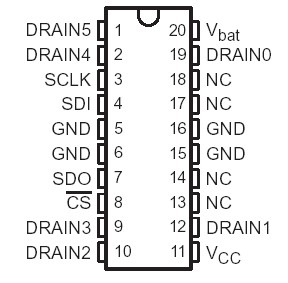TPIC2603: Features: Serial Control With DiagnosticsSix Power DMOS Transistor Outputs of 350-mA Continuous CurrentInternal 60-V Inductive Load ClampIndependent ON-State Shorted-Load/Short-to-Battery Fault Dete...
floor Price/Ceiling Price
- Part Number:
- TPIC2603
- Supply Ability:
- 5000
Price Break
- Qty
- 1~5000
- Unit Price
- Negotiable
- Processing time
- 15 Days
SeekIC Buyer Protection PLUS - newly updated for 2013!
- Escrow Protection.
- Guaranteed refunds.
- Secure payments.
- Learn more >>
Month Sales
268 Transactions
Payment Methods
All payment methods are secure and covered by SeekIC Buyer Protection PLUS.

 TPIC2603 Data Sheet
TPIC2603 Data Sheet








